Five-star ratings don’t just happen.
You must be proactive about building a swell of positive online reviews to outweigh the rare negative reviews.
Reputation management isn’t a “nice to have” feature in your marketing tool belt – it can make or break your business.
We’ve rounded up the best (and worst) reputation management examples. We’ll also share helpful best practices to improve your business reputation.
What is reputation management?
In about two minutes, Jessica breaks it down for you.

Reputation management consists of influencing your brand’s perception. It involves promoting a positive image and downplaying any critical views. The goal behind managing your reputation is to increase trust and credibility among your audience.
Why You Need a Reputation Management Strategy
What comes up when potential customers find your brand online? Whether it’s a Google search or a TikTok video, ensuring your brand appears favorably online is crucial.
An online reputation management strategy has become the bread and butter of a successful digital marketing strategy.
Brand sentiment isn’t all about warm and fuzzy feelings, either. Research from BrightLocal found that 98% of consumers use the internet to research small businesses before purchasing from them. Your brand’s online reputation hinders your ability to grow leads, sales, retain customers, and bottom line.
Related: The Business Owner’s Guide to Managing Your Online Reputation
Pros and Cons of Online Reputation Management
Reputation management is the process of monitoring and improving the public sentiment of a brand. The approach uses a combination of social media management, online reviews, and customer testimonials in reaction to an event or can be proactive in avoiding unwanted negative attention.
These days, most reputation management happens online. As such, there are some advantages and disadvantages of carrying out a reputation management strategy.
| Pros | Cons |
|---|---|
|
|
Ways to Track Your Online Reputation
Depending on the budget and resources available, there are a few different ways to freshen up your brand’s online reputation.
1) Do It Yourself
Take inventory of how your brand can improve its online presence. Consider testimonials, social media posts, customer support, and other online touchpoints. If any area isn’t delighting customers, roll up your sleeves and jump in.
This can be a very low-cost but time-intensive approach. Providing 1:1 customer support in a personalized way doesn’t scale, but it sure makes a difference in fending of negative reviews.
2) Work With a Public Relations Firm
Consider hiring a public relations (PR) agency to overcome a poor brand image. They can lend their expertise to improve your business reputation in ways that in-house teams can’t. This option is best for companies that need ongoing help with crisis management, as working with agencies often comes with a hefty price tag.
PR firms aim to book favorable media appearances, distribute customer testimonials across media channels, and facilitate positive events like giving back to the community. Broadly speaking, these deflect customer complaints found in a Google search.
3) Use a Brand Reputation Management Tool
An easier way to stay on top of your online reviews and customer complaints is to use an online reputation management tool. These services are an affordable way to get a bird’s eye view of all your review sites and respond promptly.
These tools can offer review management, track social media activity, and alert your customer support team in real time. This omnichannel approach makes sure that no customers fall through the cracks.
The top reputation management tools monitor reviews from social media posts, forums, and 50+ review sites, including Google, Facebook, and Yelp.

10 Good Reputation Management Examples
Here are 10 examples of brands that have knocked it out of the park when managing their online reputation.
1. Effective crisis management — Chipotle
In 2015, Chipotle faced backlash when dozens of customers contracted food poisoning from contaminated produce. This crisis generated significant media coverage and plummeting sales.
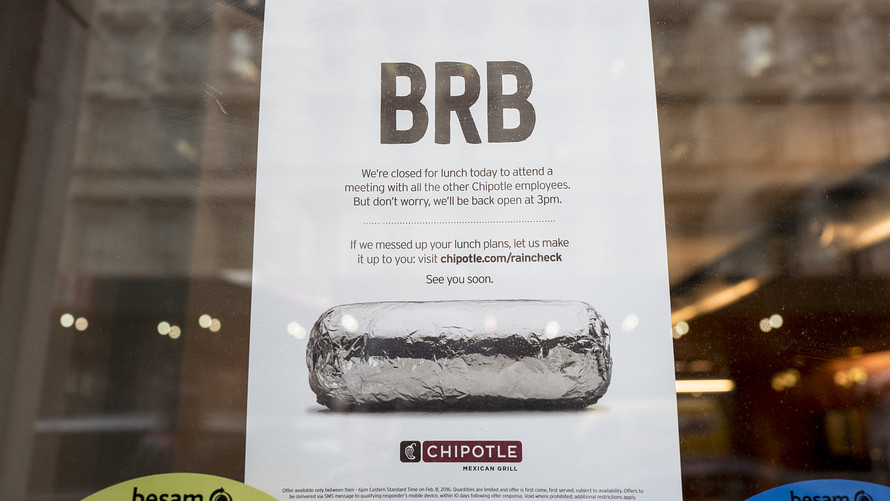
Chipotle’s public relations response was swift. They quickly closed all affected locations and implemented new food safety protocols.
The chain offered free meal coupons nationwide to earn back the trust of its customer base. This effective PR response (it’s hard to say no to free burritos!) helped Chipotle restore its brand image to one of America’s most beloved burrito bowl suppliers.
2. Proactive customer service — Zappos
Few companies have a better customer experience than Zappos.

Zappos’ philosophy is to “WOW” every customer through excellent proactive customer service. This philosophy means contact center agents can go above and beyond by hand-written cards or even delivering flowers to customers during difficult times.
Other customer satisfaction initiatives, such as their 365-return policy, regularly create positive social media and press for the brand.
3. Surprise Acts of Kindness — Chewy
Chewy is a popular online retailer specializing in pet food and supplies shipped to customers’ doorsteps.
Christmas came early from @Chewy. Thank you so much for the painting!
— Maynard Gozer Krebs (@cozywithgozy) December 23, 2019
Woof ❤ pic.twitter.com/1pIY4WR7SX
The surprised thousands of customers with custom-painted pet portraits of their “fur babies.” Often, these were gifted to grieving pet owners after a loss as a way to remember their loved ones.
These unique acts of kindness spread like wildfire in social media, including TikTok and Reddit. It’s also an effective investment to complement its SEO marketing strategy with many media mentions.
4. Responsive customer service — Nike
In addition to selling shoes with a loyal following, Nike has made strides to elevate the digital customer experience. The brand is known for its dedication to excellent customer service.
Notably, the brand’s customer service Twitter account supports anyone 24/7 in English, Spanish, and French. Also, their voice and tone are key to being approachable and trusted.
5. Community building — Glossier
Minimalist beauty brand Glossier has grown a positive following on major social media platforms.
Glossier launched popular user-generated content campaigns, like “Skin First, Makeup Second,” to feature their customers through social media.

As a result, Glossier has built a strong community of loyal customers. A Glossier-branded subreddit boasts over 41,000 active members.
6. Aligning with customer’s values — Patagonia
Few brands put their money where their mouth is like the outdoor clothing brand Patagonia.
The company’s environmental focus is far from lip service: they donate 1% of all sales to environmental organizations, have pledged to use 100% recycled materials by 2025, and have been a vocal advocate in campaigns to protect public land.

This commitment has built a strong sense of trust with their value-aligned customers.
Patagonia also prioritizes customer satisfaction through its Ironclad Guarantee. This brand promise allows customers to return any Patagonia product for a replacement, refund, or repair regardless of when customers purchased it.
7. Growth through expertise — Beardbrand
Beardbrand, a men’s grooming supplies retailer, skyrocketed to over 120,000 in sales in only 12 months. How? By producing a series of videos educating men about how to take care of their beards.
Rather than pouring money into expensive media channels, Beardbrand produced helpful videos on the craft, making it clear they’re more than just a retailer — they solve customer needs.
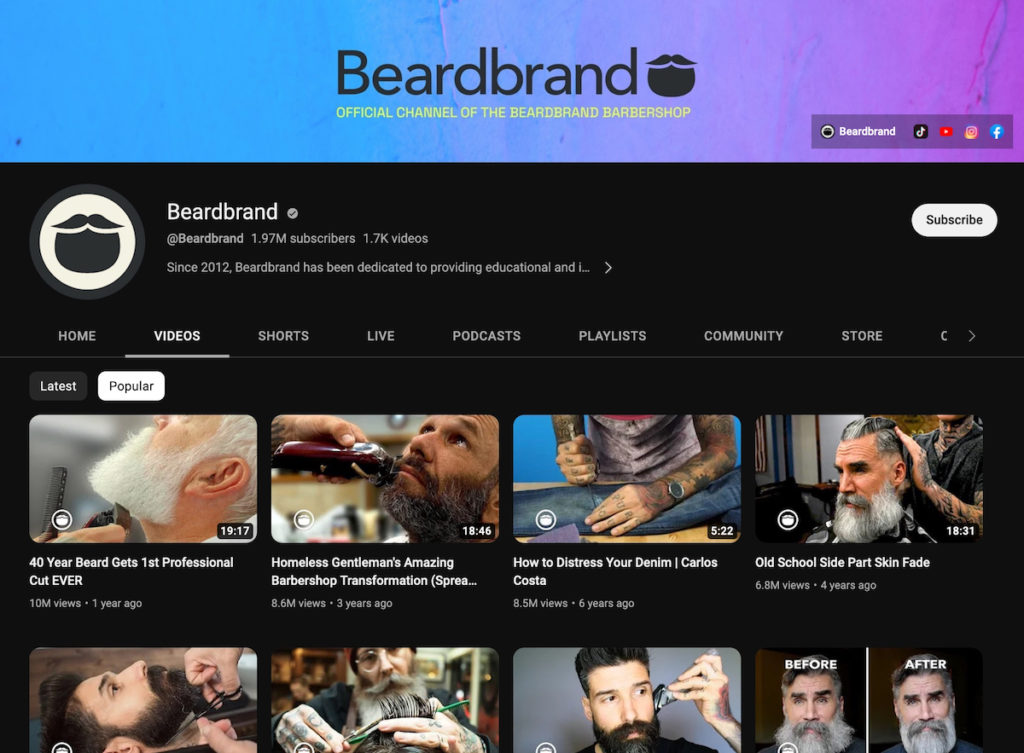
Beardbrand collected customer feedback on their Shopify website, Amazon product pages, and other online review sites. The customer reviews were overwhelmingly positive, and the brand’s online influence soared.
8. Social media customer service — Adobe
Like Nike, Adobe’s Twitter account doesn’t just publish marketing updates. The brand leverages social listening to help designers who run into technical issues, have questions, or need extra support.
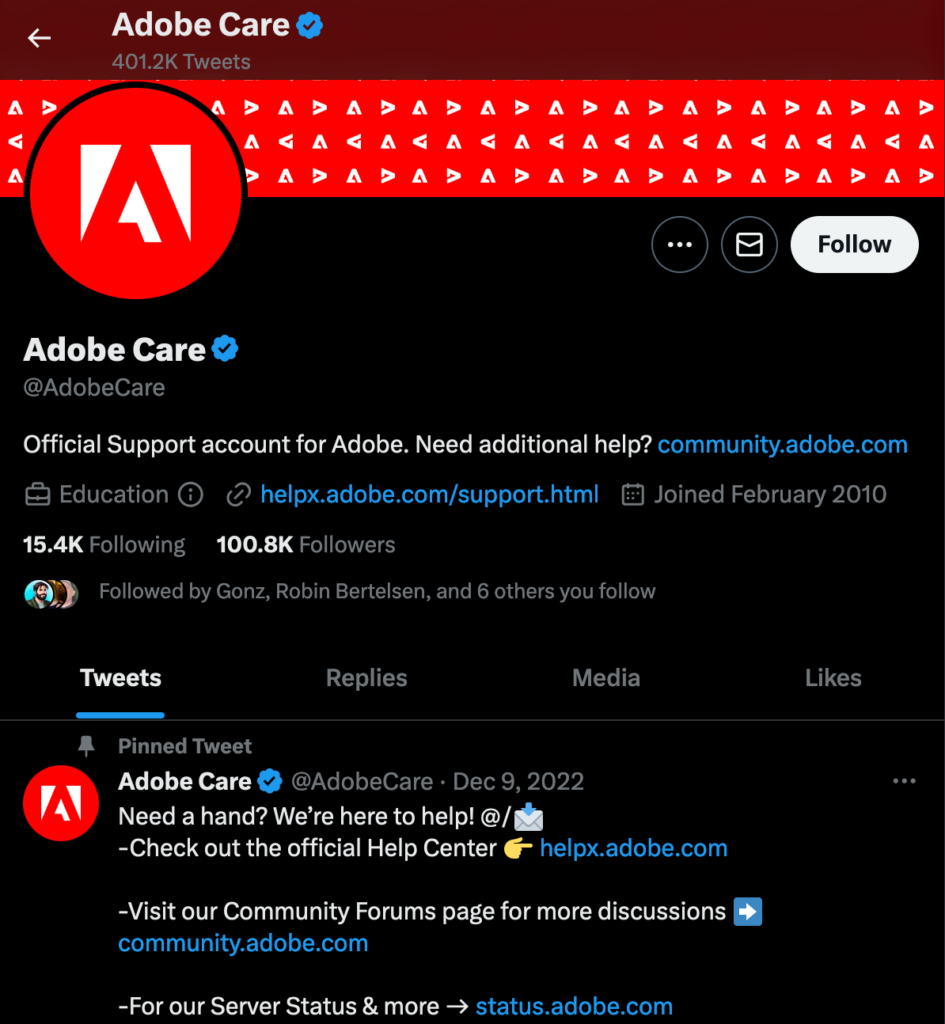
Their team responds to questions publicly and privately through direct messages. @AdobeCares has replied over 400,000 times since 2010.
As part of its marketing strategy, solving user needs impacts customer retention. The company has increased competition from the likes of Canva, another rival with raving five-star reviews.
9. Customer convenience — Amazon
Amazon has undoubtedly had its fair share of negative press over the years. Yet the tech giant continues to sustain a very loyal customer base and increased market share year over year.
The retailer solves many types of customer feedback with automated support deflecting requests to its inbound call center. In some cases, customers can obtain refunds without the hassle of physically returning a defective product.
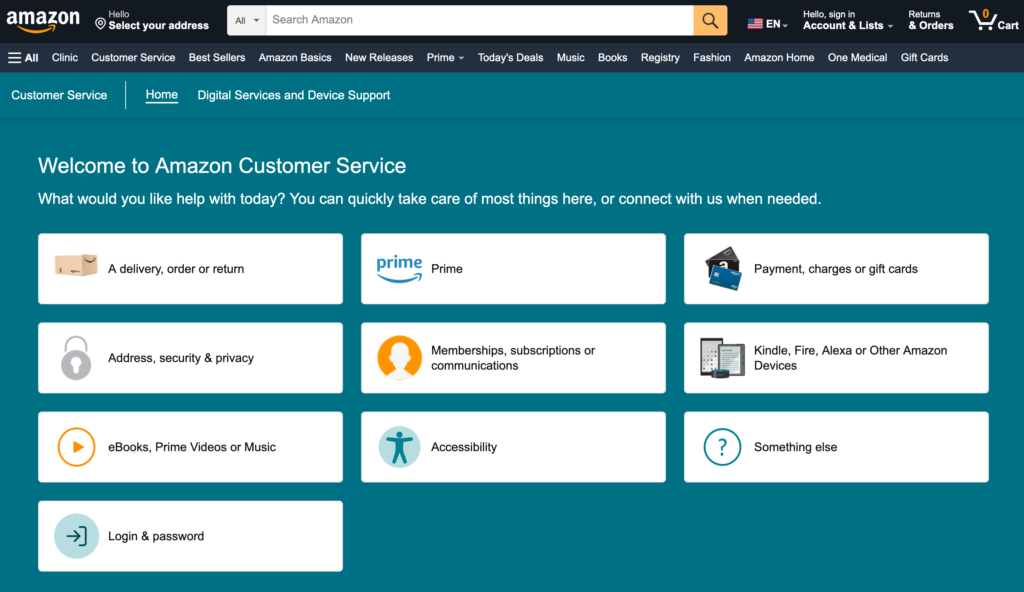
The reason for this trust? Amazon’s dedication to customer service, feedback, and convenience. Support agents are available 24/7 to help with order errors, offer refunds within 30 days, next-day delivery, and more.
10. Active social listening — Coca-Cola
Coca-Cola is one of the most widely recognized brands in the world, yet it still makes personal interaction with customers daily through social listening.
Coke’s social media team tracks all mentions of their brand on social media– even when not explicitly tagged.
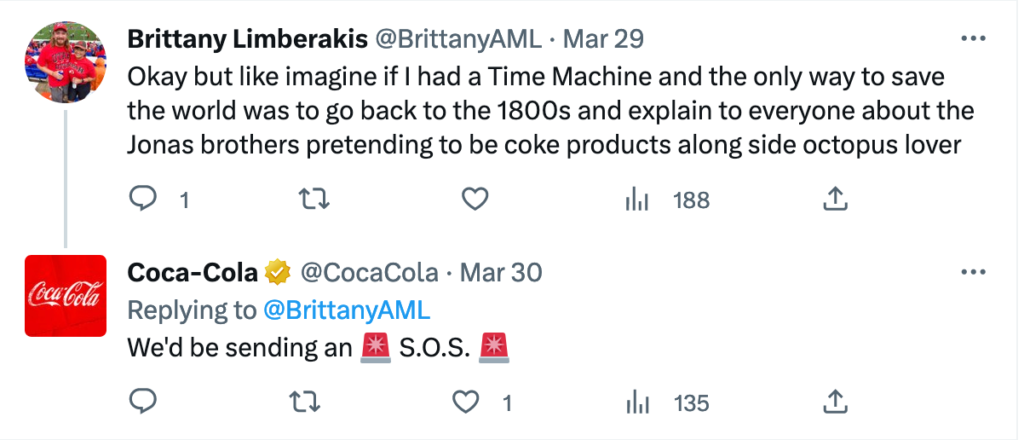
In the social media post above, they make a humorous reference to a popular TikTok trend. This example humanizes and gives the brand a sense of humor.
Bad Reputation Management Examples
11. Threatening legal action — KlearGear
How to not respond to a negative review? Threatening the customer with a lawsuit. In 2013, KlearGear, an online novelty item retailer, did just that. They responded to a bad review about an undelivered item with the threat of a $3,500 fine – citing a non-disparagement clause in their terms of service.

It wasn’t a good look. The incident led to public backlash and a lawsuit against the company.
12. Shaming customers — Boners BBQ
When receiving negative feedback isn’t ideal, writing negative things about a customer online is even worse.
In 2012, a local BBQ joint put a customer on blast on social media for not leaving a tip. Not only did the post include the customer’s name, but also photos from their private social media profile.

The public response was swift: negative online reviews flooded the business’s profile. Several news reports documented the public backlash and subsequent boycott of the restaurant.
13. Fighting with customers — Amy’s Baking Company
We can’t talk about reputation management examples without mentioning Amy’s Baking Company.
This now-shuttered business was infamous for its appearance on Kitchen Nightmares, where expert chef Gordon Ramsay was unable to continue filming because of battles with the owners.

But the TV episode was only the tip of the iceberg. Business owners Amy and Samy earned a notorious reputation for arguing with customers’ feedback in Yelp online reviews.
14. AMA that went wrong — REI
While a public Q&A can be a great way to promote transparency for your businesses, it’s not always the best idea if your brand has skeletons in your closet.

This is something REI’s CEO Jerry Strizke learned the hard way when participating in a Reddit “Ask Me Anything.” Rather than building community, the comments with the most upvotes questioned REI’s labor conditions and low wages.
The disastrous AMA made headlines, further highlighting REI’s questionable practices.
15. Diminishing customer pains — Chase
While humor can be a great way to connect with your community, knowing your audience’s real-world needs is crucial to relate to them.
Chase Bank faced public backlash after posting a #MotivationMonday tweet in 2019, poking fun at a hypothetical person’s spending habits.
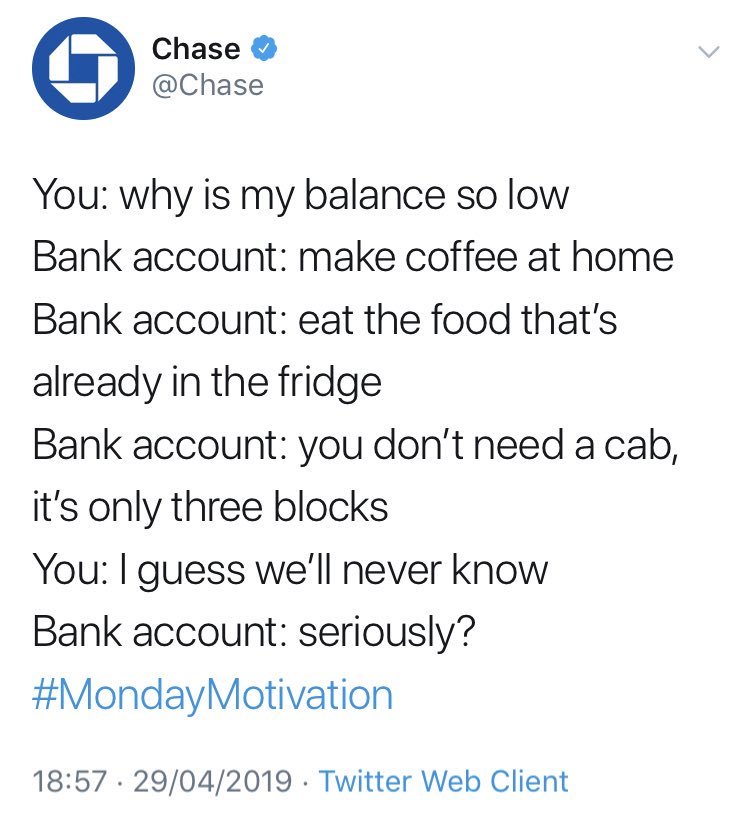
The internet was quick to bite back, putting Chase under fire for their multi-millions in taxpayer bailouts, high overdraft fees, and bloated executive salaries.
So, enough with the bad ways to handle your brand’s online reputation. What should you do instead?
How to Build a Positive Online Reputation

Follow these best practices to build a five-star reputation for your business.
✅ Be proactive about customer satisfaction
While the adage “the customer is always right” might not always ring true, customer feedback and satisfaction play a central role in your brand’s online reputation.
Adding a handwritten “thank you” card to an order or offering a discount code to loyal customers can make render a positive customer experience
Create a customer success team or support channel and promptly respond to customer complaints. Quickly reach out to customers who leave negative comments, share poor experiences on online forums, or otherwise share a problematic e experience with your brand.
The customer may not always be right, but everyone should be happy. For more ideas, check our guide on how to build an award-winning customer service strategy.
✅ Monitor social media platforms consistently
Keep a close eye on social media mentions, reviews, comments, and brand names. Engage with these social media posts, and where relevant, show that you care about your customer’s individual experiences.
Doing this manually takes a lot of time. Consider using a social media monitoring tool with integrations with top social media platforms and review sites.

The last thing you want is for your brand to go viral for the wrong reasons. Ensure your reputation management system keeps tabs on your entire social media ecosystem.
Related: Online Brand Monitoring: Top Tips & Common Blind Spots
✅ Encourage your best customers to write reviews
Happy customers can be your brand’s most influential advocates. Reach out to loyal customers and encourage them to leave a positive review – most are happy to do so.
While automated surveys help, we’ve found that talking to customers over the phone goes a long way to building a personal connection when you ask them to leave a review.
Make the process easier for them by including direct links in your email signature on review sites.
✅ Audit your brand’s online reputation
Take an inventory of your brand’s online reputation: what’s working? What needs improvement?
Google what comes up about your brand in search engine results. Take a look at online directories. Check social media for brand mentions. Ensure your business phone number is found on emails, your website, and social media.
What gets measured gets improved. Track key metrics and report on them from a single dashboard. When you do this, your team will see that customer satisfaction and maintaining a good reputation are important.
✅ Create your own media buzz
Don’t wait for critical customer feedback to create buzz and interest in your brand.
An effective online reputation management strategy involves being proactive with how people might discover and consider your brand over the long term.
Create an influx of positive sentiment by launching a new brand initiative. Build a newsworthy campaign to give back to customers, support a worthy cause, or make a splash with a new TikTok trend.
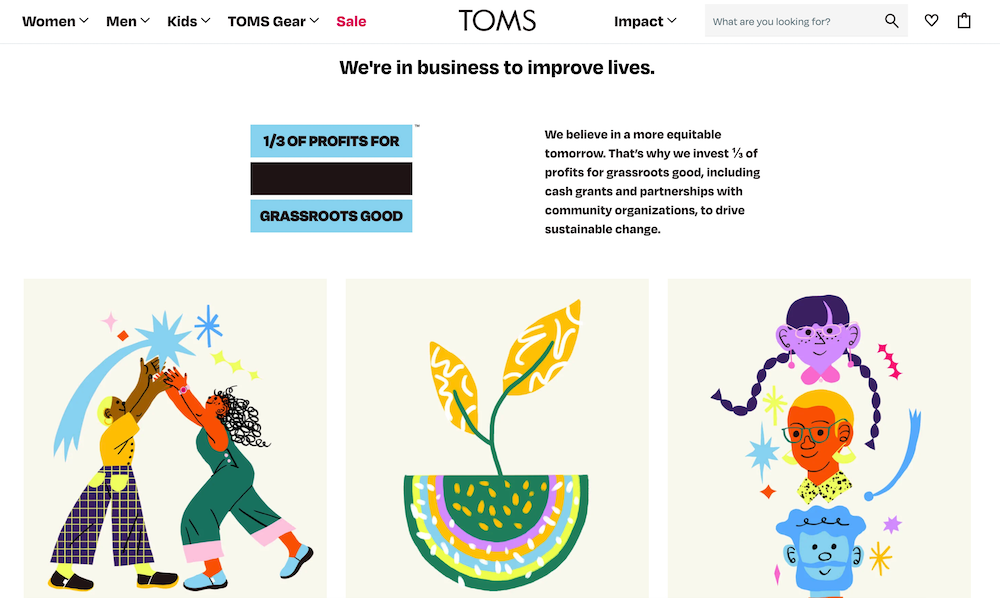
Be creative here – parodies and irreverent humor can sometimes go viral as often as polished public relations campaigns.
Related: How to Improve Online Reviews: Top Tips to Increase Rankings
FAQs about Reputation Management
In a day and age where 76% of consumers regularly read online reviews before buying a product, too many negative reviews can turn a thriving business upside down.
Too many poor reviews will sabotage your business growth. They can also tank your search engine rankings, which can take months to recover from, as a mere Google search influences perception.
All in all, it’s far better to have a proactive, rather than reactive, plan for customer reviews.
Online reputation management is the process of monitoring and improving your company’s brand sentiment.
Effective approaches to reputation management adopt a holistic strategy. Often, that includes monitoring social media channels, online directories, star review platforms, messaging apps, and other online touchpoints.
All these puzzle pieces combine to improve how your brand is perceived online.
Reputation management doesn’t have to be an expensive, complicated process. Business owners can stick to these fundamentals:
1. Proactive customer review creation: Create an automatic customer satisfaction survey to capture customers’ sentiment and willingness to recommend the brand. Review responses individually so you can assist them as needed.
2. Create safe and effective escalation paths: Empower customer service teams to flag customer experiences at risk for a negative customer review. These workflows can mitigate potential poor customer experiences with senior business leaders.
3. Actively monitor customer review portals: Routinely audit and respond to all customer reviews published on legitimate customer review platforms.
By now, these reputation management examples should inspire you to build your brand proactively by delivering a brag-worthy customer experience.
The above digital marketing strategies will help you can make a difference in how current and future customers perceive your brand.
Related: How To Build an Incredible Brand Reputation From Scratch

















 Customer Experience
Customer Experience 







